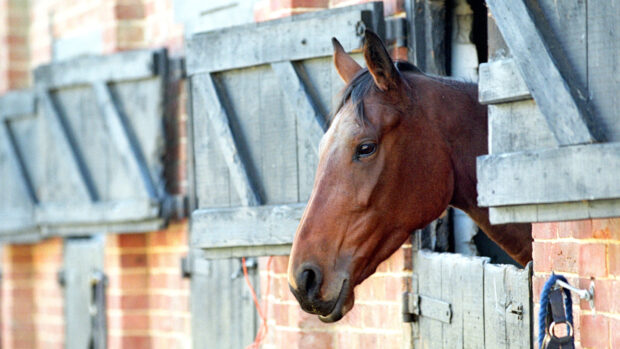Once an animal is established in any neurotic behaviour, it is very difficult or even impossible to eradicate, even if the horse is removed from the situation which prompted the original behaviour.
Therefore, it is vital to be able to recognise the early signs of any vice and stop it before the pattern becomes established.
The best treatment in the long run is to allow horses as far as possible to be as nature intended – running free in a social group.
Weaving and crib-biting
Weaving is usually a sign of boredom or anxiety. The animal rocks from side to side, normally over the stable door, which may cause excessive wear on the front feet.
A V-shaped grill on the door usually controls the behaviour.
Crib-Biting or wood chewing occurs in the stable and out in the field and seems to be a habit learned from other animals. It was thought by some to be a symptom of some nutritional deficiency, but this has mostly been discounted.
Control of the vice is aimed at reducing the surfaces on which the animal can chew. Remove the manger, for example, and place a metal strip along the open stable door. Cover any other surface with a non-toxic noxious material.



